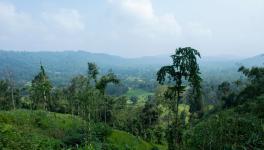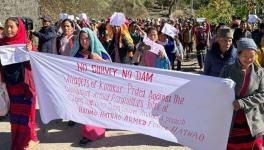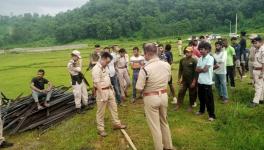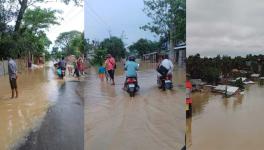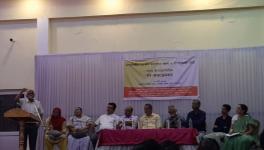Trans-Boundary Rivers, Heavy Rains and Breaching Dams
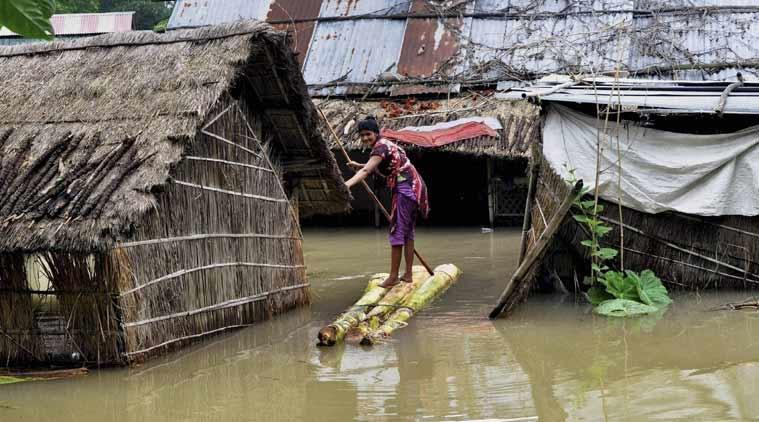
The debate on hydro-electric development in the Himalayan region has seen a lot of back and forth. The supporters of hydro-electric projects argue that most Himalayan states – and countries – are underdeveloped, hence dams would bring cheap power and revenue. Their detractors, however, point to the fragility of the Himalayas since these are fairly young mountains.
On September 14, Arunachal Pradesh witnessed floods in Itanagar, which left four people dead. The Siang – as the river is known before becoming the Brahmaputra at Pasighat – had witnessed an unprecedented increase in the volume of water. The other Himalayan state that has witnessed a rise in its river water levels is Sikkim. Around the same time as the Arunachal Pradesh flash floods, the water level of the Teesta rose considerably due to heavy rain, causing erosion to the banks and damage to Sikkim’s lifeline to India, National Highway 10. The damaged stretches of the NH 10 were between Sikkim and Kalimpong.
In Arunachal Pradesh, local community organisations – including the All Arunachal Pradesh Students Union (AAPSU) – projected China as the reason for their woes. Placing the blame on China and Chinese dams along the Yarlung Tsangpo has often been the ‘go to’ argument for local politicians. In December last year, the turbidity of the Brahmaputra was attributed to dams on the Yarlung Tsangpo caused by landslides in China. What exacerbated the political positioning was that China had refused to share river water data with India. However, now the situation has changed, as prior to the floods and the surge of flow, China had warned India that due to increased rainfall on the Tibetan plateau, 9,000 cubic metres per second of water was being released.
In an article published in the Arunachal Times, Chintan Sheth and Anirban Datta-Roy explained that the rise in river water volume of the Siang can be attributed to increased rainfall. However, one should not disregard the role glacial melt can also play. The article focused more on the impact landslide-induced dams have in the flow of rivers and their potential for flooding. However, considering the fragility of the Himalayan geography, Newsclick contacted the authors by email.
According to Anirban Datta-Roy, it would be wrong to equate landslide-created dams with human-built dams. The latter have been designed to withstand the force of large quantities of water. Whereas the former comprise loose rubble and debris. Chintan Sheth , however, directed this writer to breaches of human-built dams that have occurred. The table below is a list of dam failures that have occurred in India based on the resources Sheth mentioned.
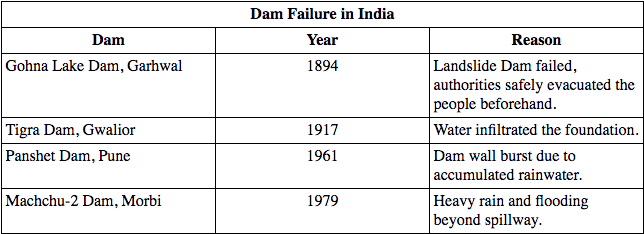
What the table demonstrates is that in the most recent cases of dam failure, the reason has been, heavy rain.
Apart from the annual deluge of landslides during the monsoon, the Himalayas are also a seismically sensitive zone. Hence, there is a worry that apart from landslide-induced dams, a strong enough earthquake could potentially damage a hydro-electric installation. In this regard, Sheth did not comment on the capacity of dams to cope with an earthquake however, he did mention that earthquakes can contribute to landslides as well as spillage from glacial lakes.
Newsclick also contacted Himanshu Thakkar from South Asia Network on Dams Rivers and People (SANDRP) by email. According to Thakkar, “The construction and operation of hydropower projects increase the disaster potential of the already vulnerable areas of Sikkim and Arunachal Pradesh. These areas are prone to floods, including flash floods, [glacial lake outburst floods], and landslide dam breaches, erosion and landslides, earthquakes, and combination of more than one such threats simultaneously. Dams exacerbate this, but unfortunately, we are not even doing any assessment of this.”
Regarding the current situation both in Arunachal Pradesh and Sikkim, Thakkar stated that “This is also a matter for study, which we have not done. This will of course vary season to season and year to year. In summer, before [the] monsoon, most of the increase would be due to glacial melt, but once monsoon sets in, monsoon may be [a] bigger factor many times, but there could also be occasions when when glacial melt would be [an] equally or more significant factor.”
Thakkar did not state whether human-made dams would definitely get breached during an earthquake. However, he admitted that the potential damage would increase significantly “due to [the] construction and operation of hydropower projects”.
What thus becomes apparent is that when dams fail or when floods occur, the causes are often natural. Thus, in a geographically integrated though politically fragmented zone, the stakeholder governments have a duty to their citizens to cooperate with one another at least on rivers and sharing water data. There is a low likelihood that the dams built will ever get decommissioned, however, mitigating the impact of potential disasters is something that requires international cooperation.
Get the latest reports & analysis with people's perspective on Protests, movements & deep analytical videos, discussions of the current affairs in your Telegram app. Subscribe to NewsClick's Telegram channel & get Real-Time updates on stories, as they get published on our website.











